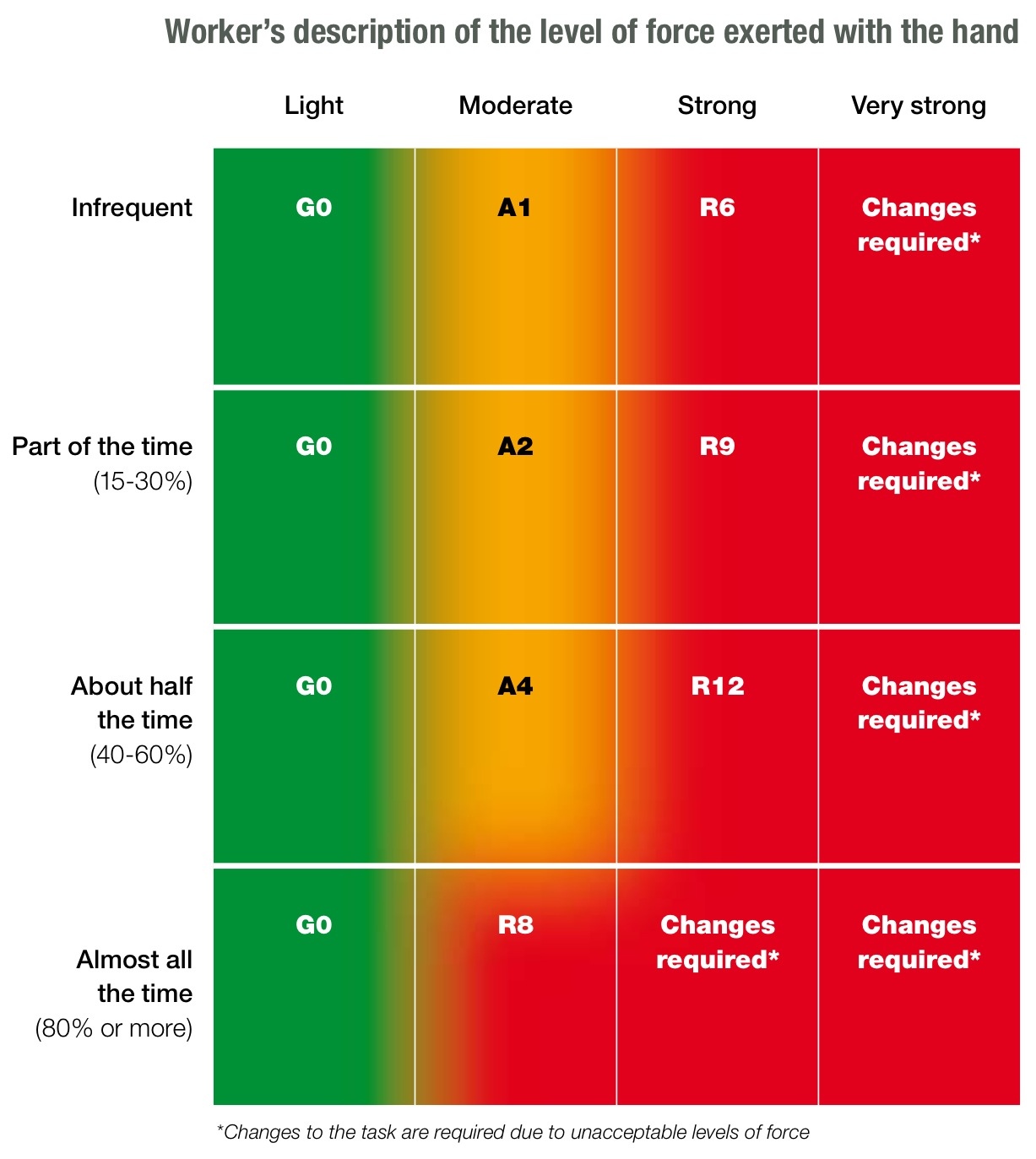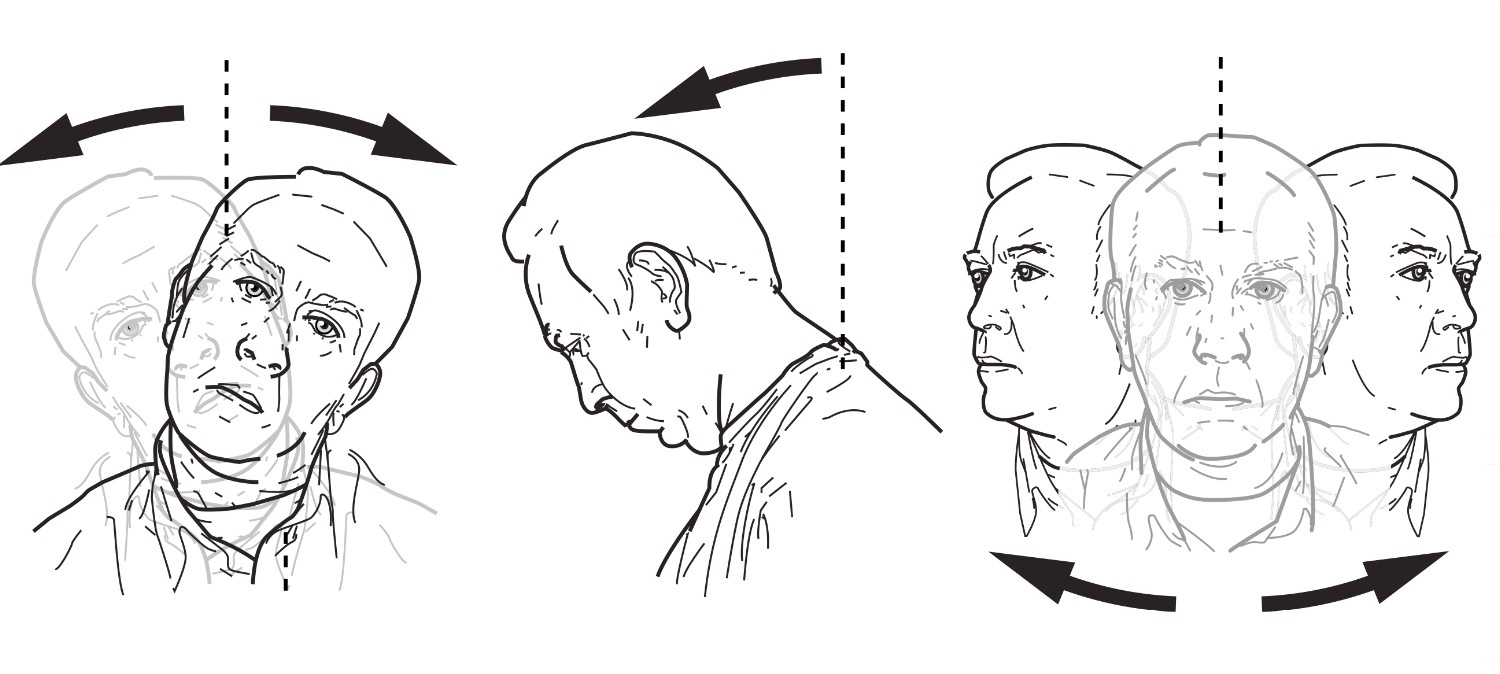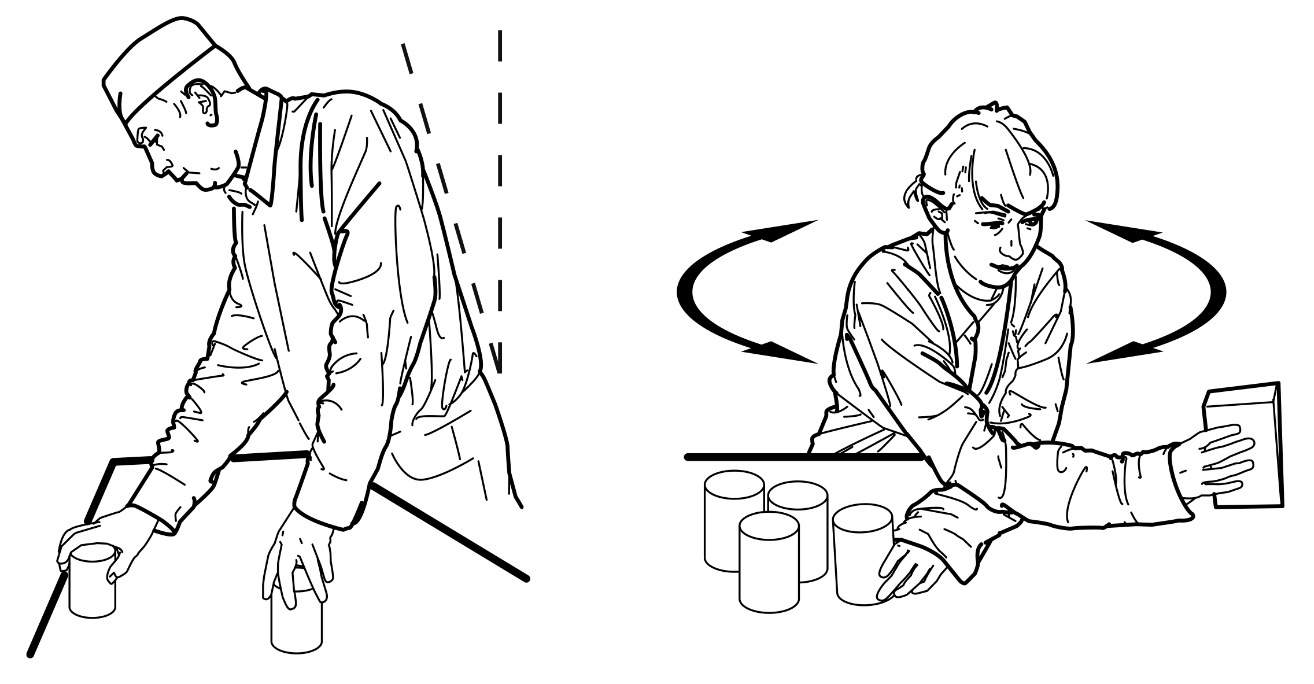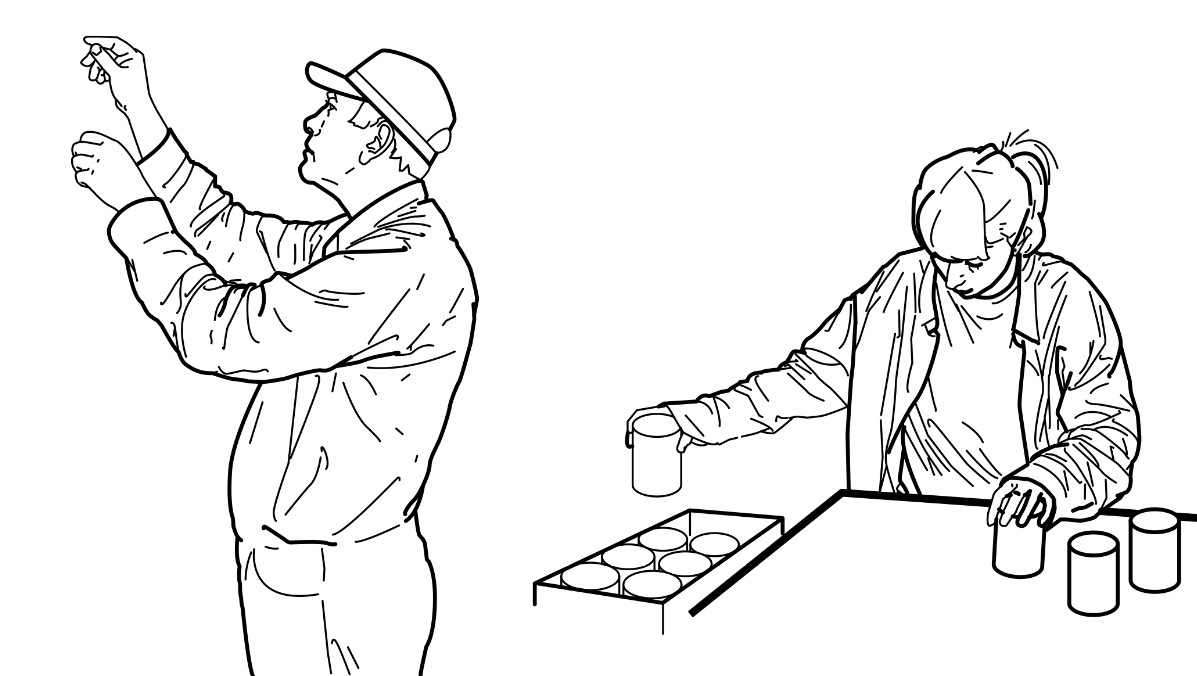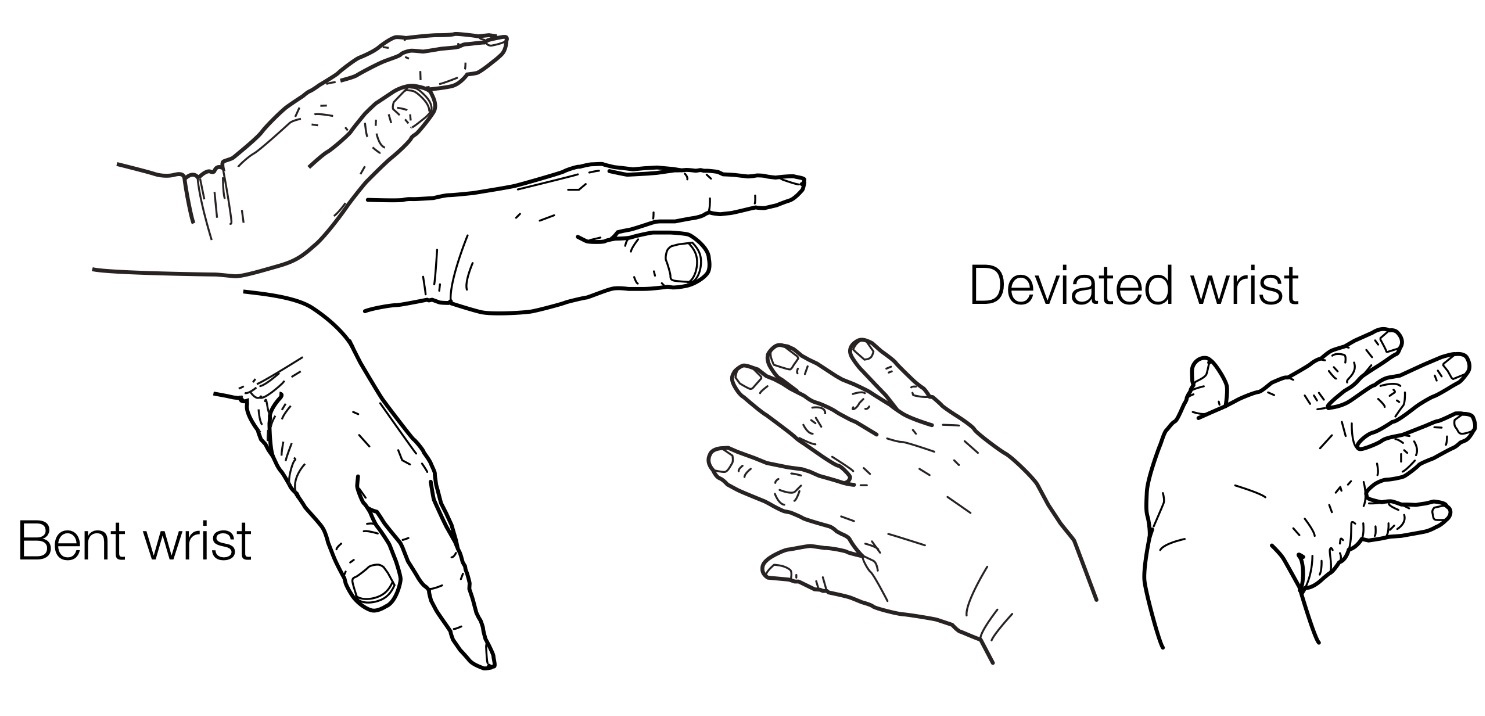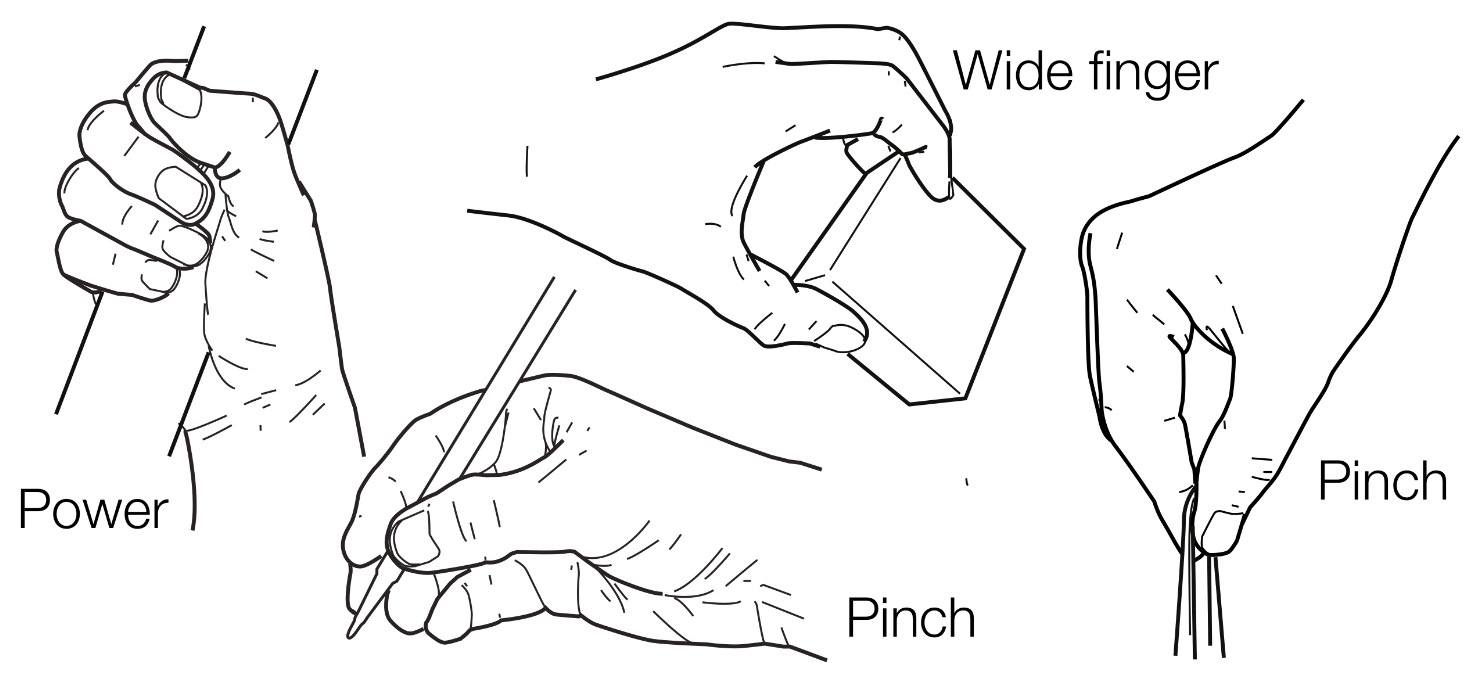Information
-
Assessment number:
-
Brief description of task being assessed
-
Site/Department
-
Conducted on
-
Review on
General Guidance
READ ALL OF THESE INSTRUCTIONS BEFORE COMMENCING
Assessment of repetitive tasks of the upper limbs (The ART tool) general guidance
-
With acknowledgement to HSE leaflet INDG438 03/10 C250
-
The assessment of repetitive tasks (ART) tool is designed to help you risk assess tasks that require repetitive moving of the upper limbs (arms and hands). It assists you in assessing some of the common risk factors in repetitive work that contribute to the development of Upper Limb Disorders (ULD's).
ART is intended for people with responsibility for the design, assessment, management, and inspection of repetitive work. It can help identify those tasks that involve significant risks and where to focus risk reduction measures. -
Repetitive tasks are made up of a sequence of upper limb actions, of fairly short duration, which are repeated over and over again, and are almost always the same (e.g. stitching a piece of cloth, manufacturing one part, packaging one item).
ART is most suited for tasks that:
- Involve actions of the upper limbs;
- Repeat every few minutes, or even more frequently; and
- Occur for at least 1-2 hours per day or shift.
The tasks are typically found in assembly, production, processing, packaging, packing and sorting work, as well as work involving the regular use of hand tools.
ART is not intended for display screen equipment (DSE) assessments
Before completing ART:
-
Spend some time observing the task to ensure that what you are seeing is representative of normal practices.
It is important to consult workers and safety representatives during the assessment process.
Where several people do the same task, make sure you consult more than one worker about the demands of the task.
It may help to video record the task so you can view it again, away from the work area.
Completing the task description form:
-
Describe, in the informational fields, the repetitive task to be assessed.
Identify the times when the repetitive task is performed and when any breaks or pauses occur. You will need to consider the timing of:
– meal breaks;
– other official breaks;
– other pauses (eg during pauses in production); and
– any non-repetitive tasks (eg visual inspection task).
Making the assessment:
-
Decide whether to make an assessment of the left arm and the right arm, or just the arm that is predominantly involved in the task. If there is any doubt, consider both the left and the right arm.
If you assess both arms, scores for the left arm and right arm must be kept separate and not combined in the exposure score
The assessment is split into four stages:
– Stage A: Frequency and repetition of movements;
– Stage B: Force;
– Stage C: Awkward postures;
– Stage D: Additional factors.
Taking Action:
-
The purpose of using ART is to identify significant risks and then reduce the level of risk in the task.
The task scores and exposure scores help prioritise those tasks that need most urgent attention and help check the effectiveness of any improvements. The colours assigned to the risk factors will help identify where to focus risk reduction measures.
Where tasks require attention, first look for ‘higher order’ solutions where it is reasonably practicable to eliminate the hazard, for example, through redesign of the work, substitution or replacement of tools or components, or automation of the task.
Where these measures are not practicable, identify how tasks might be improved to avoid or reduce those factors that score red. Then consider how to reduce the amber scores.
If scores for individual risk factors cannot be improved, then the lowest order in the hierarchy of controls is to minimise the risk by designing suitable systems of work (eg task rotation schedules), using PPE, if appropriate, and providing training. -
Preventative measures can be simple and cost-effective (eg making changes to the working height or placement of work items can allow better arm postures).
The people who are doing the repetitive work should be consulted when exploring and introducing risk reduction measures. Employees can be especially good at devising effective and practical improvement measures.
You cannot prevent all ULDs. Suitable systems for early reporting of symptoms, proper treatment, rehabilitation and return to work are essential components for managing risks and any episodes of ULDs
Dealing with task rotation:
-
The method to calculate the exposure score applies where a worker performs the same repetitive task throughout the day or shift. However, it is recognised that workers may actually carry out several different repetitive tasks as part of their job.
If workers rotate to other repetitive tasks in their job, you should assess all their tasks involving repetitive movements of the upper limbs and consider their overall exposure.
One method is to use ART to make an assessment of each repetitive task in the rotation. Then compare the risk factor colours and scores across the different tasks.
If you find that workers rotate to tasks with similar red scores or high task scores, the task rotation may not provide enough variation or recovery in the work. In this case, examine the task rotation system further. It is important to speak to workers about whether the rotation provides sufficient recovery or improves their work in other ways.
Further information
Detailed description of task being assessed
-
Add description of the process
Process step:
-
Photograph the person performing the task where possible
-
What hand tools are used?
-
Production Rate in units per - second, minute, hour, shift, day etc (Specify)
-
How often is the task repeated? (e.g. 1 every 10 seconds)
-
How long does the worker perform the task without a break?
-
How long does the worker perform the task in a typical day or shift (excluding breaks)?
-
How often does the individual perform the task? (e.g. Daily, weekly, etc)
-
How often is the task carried out in the organisation? (e.g. Daily, weekly, etc)
-
If items weigh more than 8kg, and the task involves manual handling, consider using the MAC tool
-
Assessment conducted by: (name and sign)
General information
-
Person being assessed
-
Which side of the body is primarily involved?
-
Do workers rotate to other tasks and if so, what tasks?
Are there any indications that the task is high risk?
-
The task or similar tasks have a history of upper limb disorders (ULDs) (eg company accident book, RIDDOR reports, medically diagnosed cases of upper limb disorders).
-
There are signs workers find the task difficult (e.g. wearing arm supports or bandages, reporting discomfort, aches or pains). Ask the workers if they have any of these symptoms.
-
Other indications? If so, describe:
A1-A2 - Frequency & repetition
Section A1 - Arm Movements
-
Guidance:
Observe the movement of the arm and select the category below that is the most appropriate. Assess both the left (L) and the right (R) arm. -
LEFT arm movements are:
-
RIGHT arm movements are:
-
Comment
Section A2 - Repetition
-
Guidance:
This refers to movement of the arm and hand, but not fingers. Observe the movement of the arm and hand and count the number of times the same or a similar pattern of motion is repeated over a set period of time (e.g. 1 minute). Assess both the left (L) and the right (R) arm -
Similar motion pattern of the LEFT arm and hand is repeated:
-
Similar motion pattern of the RIGHT arm and hand is repeated:
-
Comment
B - Force
Section B - Force score selection
-
Where possible, ask the person doing the work if there are any actions that require muscle effort of the arm hand or fingers and to describe the level of force involved in each action:
- Light force - There is no indication of any particular effort
- Moderate force - force needs to be exerted WITH SOME EFFORT (e.g. pinching or gripping objects, moving levers or pushing buttons, manipulating lids or components, pushing or forcing items together or using tools)
- Strong force - Force is obviously high, strong or heavy
- Very strong force - force is near to the maximum level that the worker can apply -
Use the grid below to determine the level of force inserted with the hand and the amount of time the force is exerted. If more than one type of force is exerted, select the highest score obtained with the grid.
-
Selection from grid (LEFT)
- Light Force Infrequently
- Light Force 15-30% of the time
- Light Force 40-60% of the time
- Light Force more than 80% of the time
- Moderate Force Infrequently
- Moderate Force 15-30% of the time
- Moderate Force 40-60% of the time
- Moderate Force more than 80% of the time
- Strong Force Infrequently
- Strong Force 15-30% of the time
- Strong Force 40-60% of the time
- Strong Force more than 80% of the time
- Very strong force at any frequency
-
********************************************************************************************************
URGENT CHANGES TO THE PROCESS ARE REQUIRED SINCE THERE ARE UNACCEPTABLE LEVELS OF FORCE BEING APPLIED BY THE HAND
******************************************************************************************************** -
Please tick the box to acknowledge you have read the above message
-
Selection from grid (RIGHT)
- Light Force Infrequently
- Light Force 15-30% of the time
- Light Force 40-60% of the time
- Light Force more than 80% of the time
- Moderate Force Infrequently
- Moderate Force 15-30% of the time
- Moderate Force 40-60% of the time
- Moderate Force more than 80% of the time
- Strong Force Infrequently
- Strong Force 15-30% of the time
- Strong Force 40-60% of the time
- Strong Force more than 80% of the time
- Very strong force at any frequency
-
********************************************************************************************************
URGENT CHANGES TO THE PROCESS ARE REQUIRED SINCE THERE ARE UNACCEPTABLE LEVELS OF FORCE BEING APPLIED BY THE HAND
******************************************************************************************************** -
Please tick the box to acknowledge you have read the above message
-
Comment:
C1-C5 - Posture
-
Determine the amount of time that the worker spends in the postures described below. This includes the time spent moving to a bent or twisted position repetitively and the time spent holding a bent or twisted position.
Section C1 - Head/Neck posture
-
Guidance:
The neck is considered to be bent or twisted if an obvious angle between the neck and back can be observed as a result of performing the task. -
The head or neck is:
-
Comment:
-
Clarify with a photograph if necessary
Section C2 - Back posture
-
Guidance:
The Back posture is considered awkward if more than 20° of twisting or bending is observed. -
The back is:
-
Comment:
-
Clarify with a photograph if necessary
Section C3 - Arm posture
-
Guidance:
The arm is considered to adopt an awkward posture if the elbow is raised to around chest height and the arm is unsupported (e.g. not resting on a workbench). -
The LEFT elbow is:
-
The RIGHT elbow is:
-
Comment:
-
Clarify with a photograph if necessary
Section C4 - Wrist posture
-
Guidance:
The wrist is considered to be bent or deviated if an obvious wrist angle can be observed. -
The LEFT wrist is:
-
The RIGHT wrist is:
-
Comment:
-
Clarify with a photograph if necessary
Section C5 - Hand/Finger grip
-
Guidance:
Consider how the operative grips the object based on the picture below: a -
The LEFT hand or fingers hold objects in a:
-
The RIGHT hand or fingers hold objects in a:
-
Comment:
-
Clarify with a photograph if necessary
D1-D3 - Additional Factors
Section D1 - Breaks
-
Determine the maximum amount of time that individuals perform the repetitive task without a break.
Breaks are significant changes or pauses (e.g. of at least 5 to 10 minutes) in arm or hand activity.
They include structured breaks such as meal breaks. They also include time spent performing other tasks that do not involve a similar repetitive arm movements (e.g. a visual inspection task) -
The worker performs the task continuously, without a break, for:
Section D2 - Work pace
-
Speak to the workers about any difficulties they might have keeping up with the work.
Select the most appropriate category.
If the score is Amber or red, ask for more information about this aspect of the work -
The worker finds it...
Section D3 - Other factors
-
Identify any other factors that are present in the task
Select the most appropriate category. Assess both the left (L) and right (R) arm. -
gloves affect gripping and make the handling task more difficult?
-
a tool (eg hammer, pick) is used to strike two or more times a minute?
-
the hand is used as a tool (eg hammer) and struck ten or more times per hour?
-
the tools, workpiece or workstation cause compression of the skin?
-
the tools or workpiece cause discomfort or cramping of the hand or fingers?
-
the hand/arm is exposed to vibration?
-
the task requires fine precise movements of the hand or fingers?
-
operators are exposed to cold or draughts or grip cold tools?
-
lighting levels are inadequate?
-
Factors present for the LEFT arm...
-
Factors present for the RIGHT arm...
Task Score
Task score
-
To calculate the task score, add together the scores from each section (view score in section view)
Task score = A1 + A2 + B + C1 + C2 + C3 + C4 + C5 + D1 + D2 + D3
*IMPORTANT*
If you have assessed both arms, the scores for the left arm and the right arm should be kept separate and should not be combined
TASK SCORE (Section A + Section B + Section C + Section D1, D2 and D3)
D4 - Duration
Section D4 - Duration
-
Determine the amount of time to work that the worker performs the repetitive task in a typical day or shift (excluding breaks).
Select the most appropriate category. -
Duration of task by worker:
-
Multiplier to be applied to total score from all sections is 0.5
-
Multiplier to be applied to total score from all sections is 0.75
-
Multiplier to be applied to total score from all sections is 1.0
-
Multiplier to be applied to total score from all sections is 1.5
Exposure Score
Exposure score
-
It is possible to adjust the task score to reflect the total duration the task is performed by worker. Multiply the task score by the appropriate duration multiplier (D4) to calculate the exposure score
Exposure score = duration multiplier x task score -
Calculated exposure score (round UP to nearest 1)
-
Select exposure score group
-
Score is less than or equal to 11, the proposed exposure level is therefore LOW
Action: consider individual circumstances -
Even if the exposure score is low, you should consider the vulnerability of certain individuals and groups where appropriate (eg new and expectant mothers, workers that are new, returning to work, or having difficulties with repetitive work).
Individual adjustments to the work may still be needed to help accommodate these people. -
Score is between 12 and 21 - the proposed exposure level is therefore MEDIUM
Action: further investigation is required in order to reduce risk -
Score is 22 or more, the proposed exposure level is therefore HIGH
Action: further investigation required urgently to reduce risk
Actions required
-
Action number:
-
Action
-
Responsibility
D5 - Psychosocial factors (unscored)
-
Psychosocial factors are not given a score. However, they should be considered as part of the assessment. Psychosocial factors should be considered through discussion with workers, and should be selected from the list
Section D5 - Psychosocial factors
-
Psychosocial factors:
- Little control over how the work is done
- Incentives to skip breaks or finish early
- Monotonous work
- High levels of attention and concentration
- Frequent tight deadlines
- Lack of support from supervisors or co-workers
- Excessive work demands
- Insufficient training to do the job successfully
- Other (specify)
-
Add additional psychosocial factor






